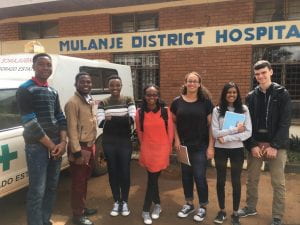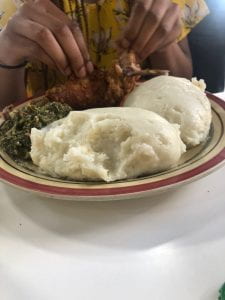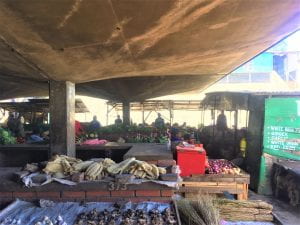Hello everyone! Although its only been 1 week, I have a ton of new experiences to share. In the Rice 360° office at Queen Elizabeth, Liseth and I have begun compiling the introduction and methods section for our reports concerning the use environment of the maternity and neonatal wards. We are currently awaiting permission to have full-time observational access, but we have been able to tour both wards and ask some questions about the day-to-day flow of the areas. While touring, we paid special attention the use of oxygen concentrator machines and incubators. We gained a much deeper understanding of how both of these technologies functioned specifically within the wards. The neonatal ward had many incubators, but they were off to the side and not in use. Through chatting with a nurse, we discovered that these incubators mainly serve for transportation of the babies to and from different wards, as some of the display interfaces of the incubator machines are very complex. As for the oxygen concentrators, we learned that it was difficult to determine whether or not a machine was outputting the correct oxygen levels for a patient. There were a number of oxygen concentrators around where the functionality of the machine was unknown.

Incubators seemed to not be in use at Mulanje District Hospital and Zomba Central Hospital as well. In the middle of the week, we took visits to these hospitals within Malawi to tour the neonatal and maternity wards and ask more questions about operations. We learned that Mulanje District Hospital had no incubators at all and instead relied on skin-to-skin contact via Kangaroo Mother Care or radiant warmers to warm up cold neonates. At Zomba Central, radiant warmers were also the preferred heating technology. Speaking to nurses at these hospitals about some of the challenges they faced while on the job was extremely revealing. Many helpful insights came about by asking the nurses what they had to improvise around the ward due to lack of resources. It was incredibly eye-opening to see the unique ways in which the nurses work with what they have in order to care for their patients. The most substantial observation that stuck with me this week was how continuous monitoring systems were rare or nonexistent in these hospitals. This is something that I have never thought about before, as when I envision a hospital, I automatically picture a patient hooked up to machines that are constantly recording and measuring patient vitals. The only ward that had a multi-parameter patient monitor was at Zomba Central. They have 1 machine for the neonatal ward, a ward that can have up to 40 newborns at one time. When it comes to assessing measures such as blood pressure, pulse, heart rate, and temperature, consistent monitoring can make a drastic difference in health outcomes.


Liseth and I are continuing our work with documenting the use environment of Queen Elizabeth this week and we are preparing to conduct our structured interviews with nurses about the Rice 360° Incubaby prototype. Incubaby is a double-walled incubator for neonates that automatically regulates to maintain a baby’s temperature. The prototypes will be arriving at Queen Elizabeth next week and we will be conducting interviews about the device with nurses to assess the usability of the device and identify areas of improvement. We also look forward to joining the other interns stationed at Malawi Polytechnic as they tour Queen Elizabeth hospital this week. This will give us more chances to learn in-depth information about the technologies implemented in the maternity and neonatal wards. Overall, it has been very cool to think about how machines and equipment actually work within their clinical setting from a Human Factors’ perspective. We really hope the information we are gathering will help Rice 360° develop systems that are appropriate and optimized for use in these hospitals so they can make a real difference in patient care. Thanks for reading and I’ll check in again soon!

